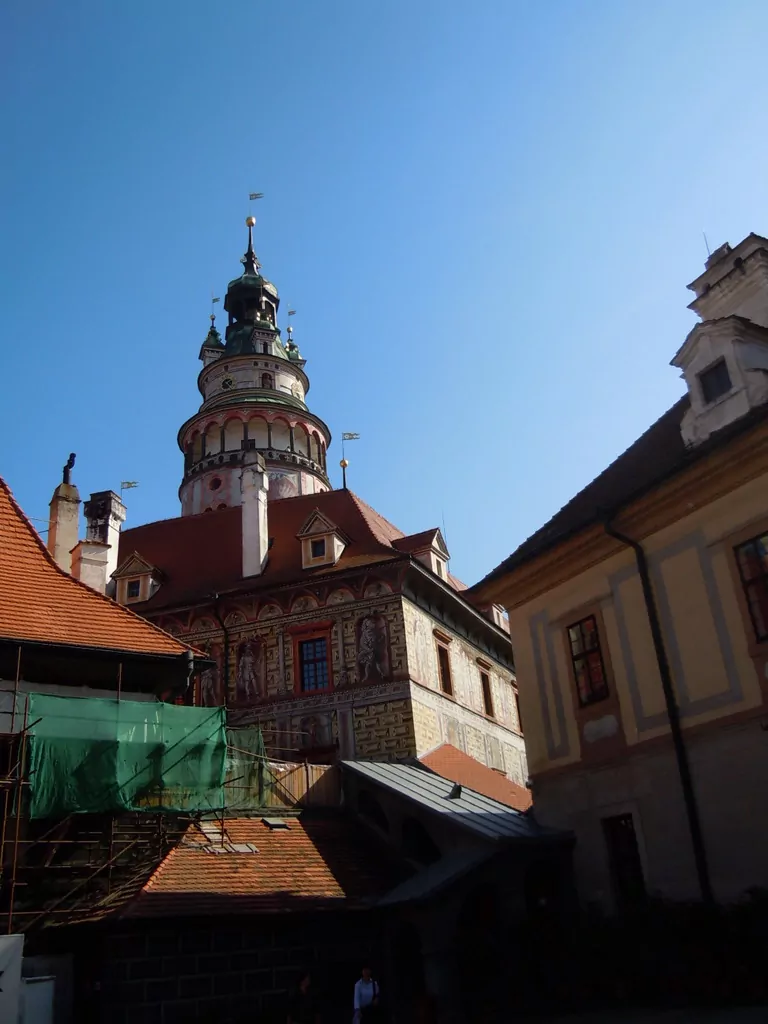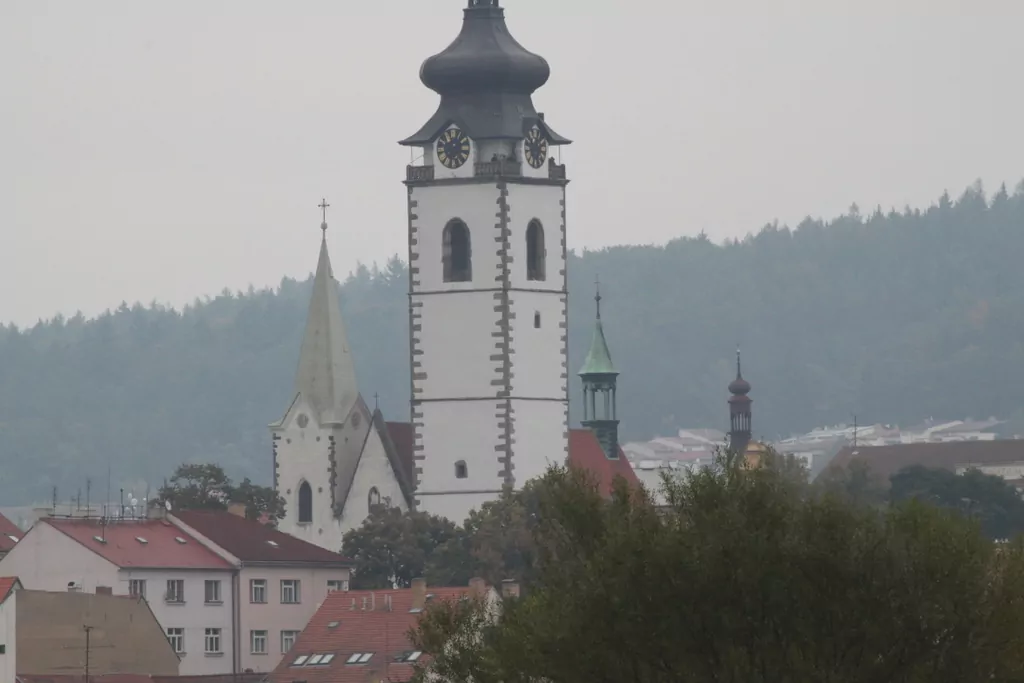You have seen castles before, right? Not exactly like the one we saw on Friday. We have wanted to get out of the big city of Prague (1.1 million) before but this trip we had the time to do so. Friday morning we left on a small bus for a round trip of 250 miles to visit an old city and an old castle. We quickly left all signs of the city. In half an hour we were in real countryside. We shared the road with tractors that were going from farm to field. It is very green and heavily cultivated. We saw some corn fields that weren’t Nebraska- or even Illinois-sized, but were still large. Most of the fields were not too large. What wasn’t being farmed was covered with forest. The trees weren’t huge, but there were a lot of them. On the way back we took some real back roads and saw smaller fields and villages in the late afternoon light. A lot of the hay is rolled up and left in the fields rather than baled and the rolls were a pretty color and cast long shadows.
On the way we stopped at a non-descript gas station for a break in a little place called Pesik. Looking across the road and down to the village I saw a church and tower towering over the village. Here is a picture…
Then we went to a town that claims to be the real home of Budweiser beer: Českĕ Budĕjovice. We only had a short time there but managed to see a good part of the central area. That central area is notable because the king (Otokara II) who designed it modeled it after the central square in Prague. If you squint just a bit when you look the pictures, you may see the resemblance.
We went on to Českŷ Krumlov, which is a UNESCO listed town. It has at least a couple of hundred buildings which have historic significance. We ate at a tourist restaurant that was first opened in 1560. I missed an opportunity to have some Eggenberger beer (pivo, for the locals) because I wanted to stay awake. I tried their version of goulash and did not care for it.
Our guide took us on a tour of the inside of the castle walls. The castle proper was begun in 1352. You have seen or read about multiple courtyards, moats (this one has 3 bears living in it) gardens, different types of living quarters and so on. All of these were interesting. But this castle has something we have seen nowhere else. Sometime in the 1400s the owners decided to do up everything in the Baroque style. So, instead of the decorations and statues being carved out of stone (and there is plenty of stone here) they are painted on. We really did not see it until the guide pointed it out. We saw about 10 rooms in the interior of the castle and were reminded once again of what an enormous amount of money, spent freely, can buy. We could not take pictures inside (although Patricia took one of the chapel before we learned that) so you will have to take my word for the lavish local and imported furnishings, wall hangings and wood floors and copper ceilings. On the other hand, the last owner had to sell to the Emperor of Bohemia because of money troubles, so the money wasn’t limitless. If we understood properly, the sale had 1000 castles and homes.
After the castle tour, we investigated the village for a while. It too was interesting. Patricia did some shopping but only came away with a bag of lavender. We sat on the terrace of an old inn and had (watery) milkshakes and looked at the fair in the small village square. There were little kids all over the place, so it was fun to watch. We discovered that the Vltava River, which runs through the center of Prague and empties into the Elbe, starts right here.
We got back after 8:00 so it was a long day for us but we saw a lot of very beautiful Czech Republic countryside and interesting historical things and we enjoyed it very much.

